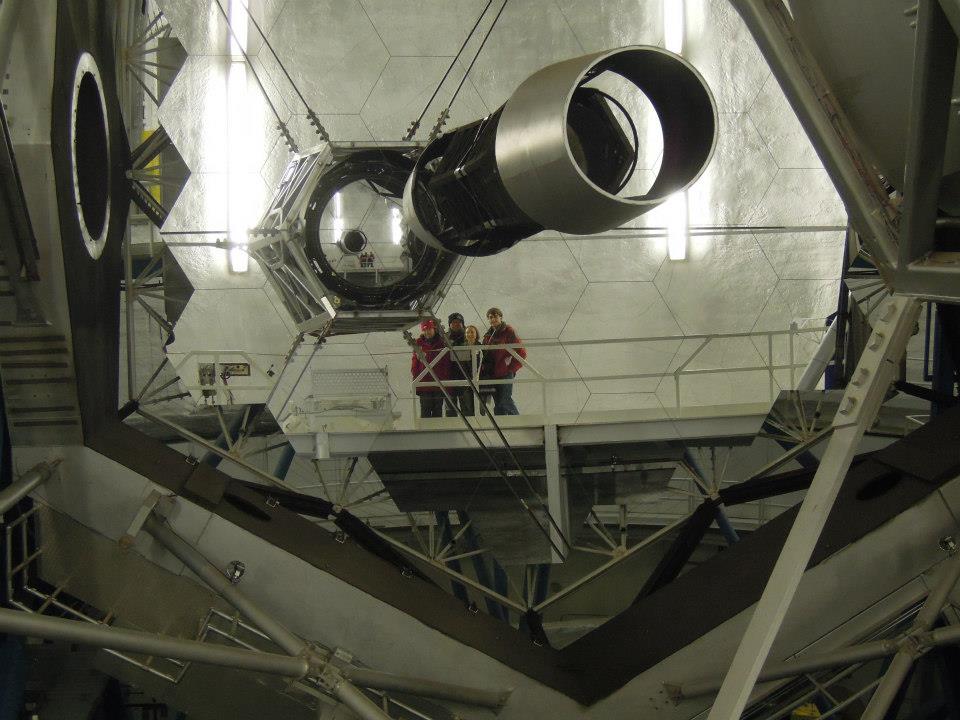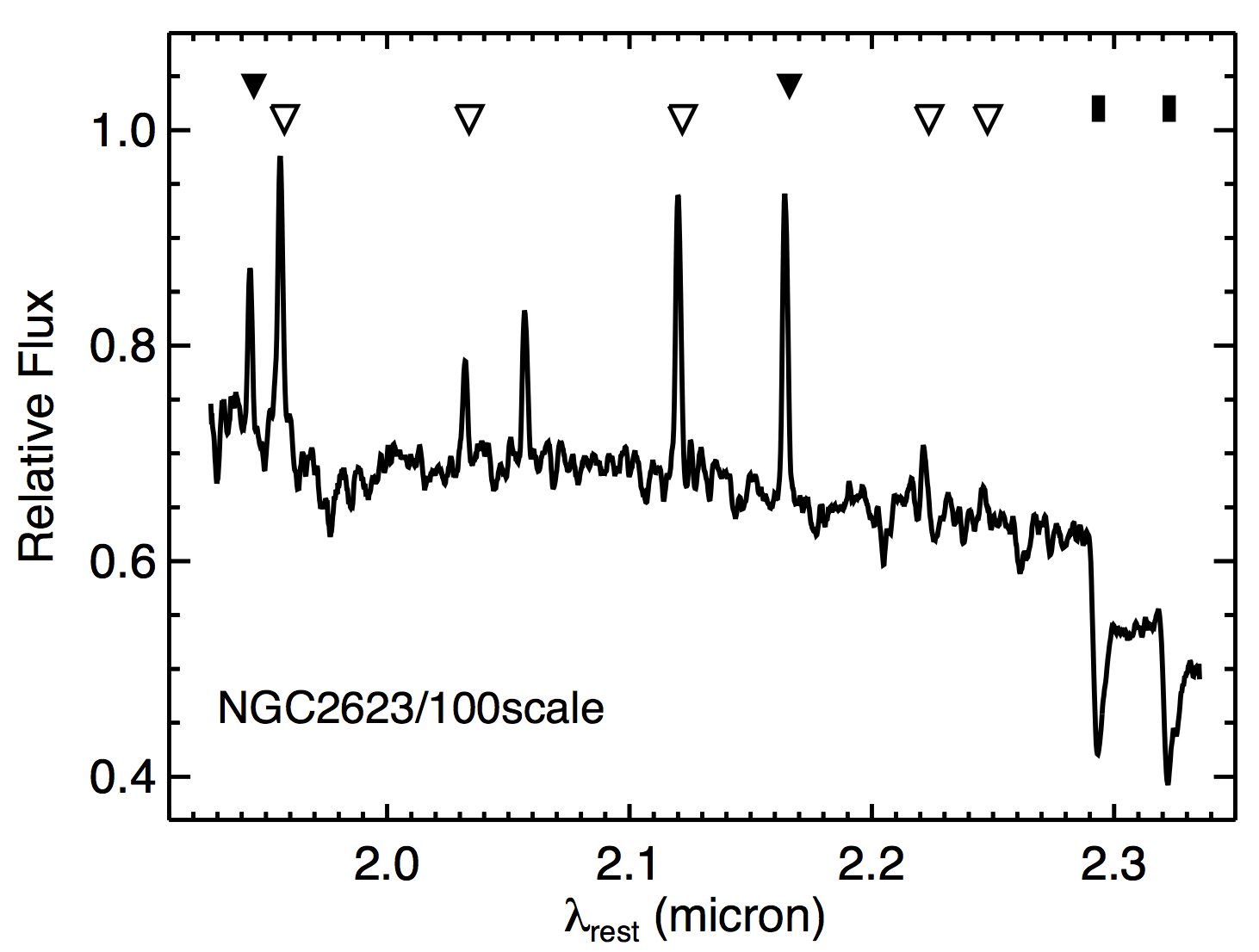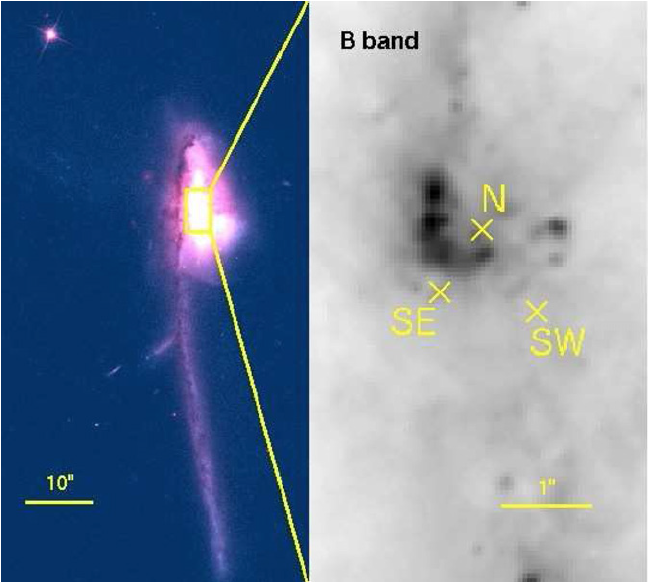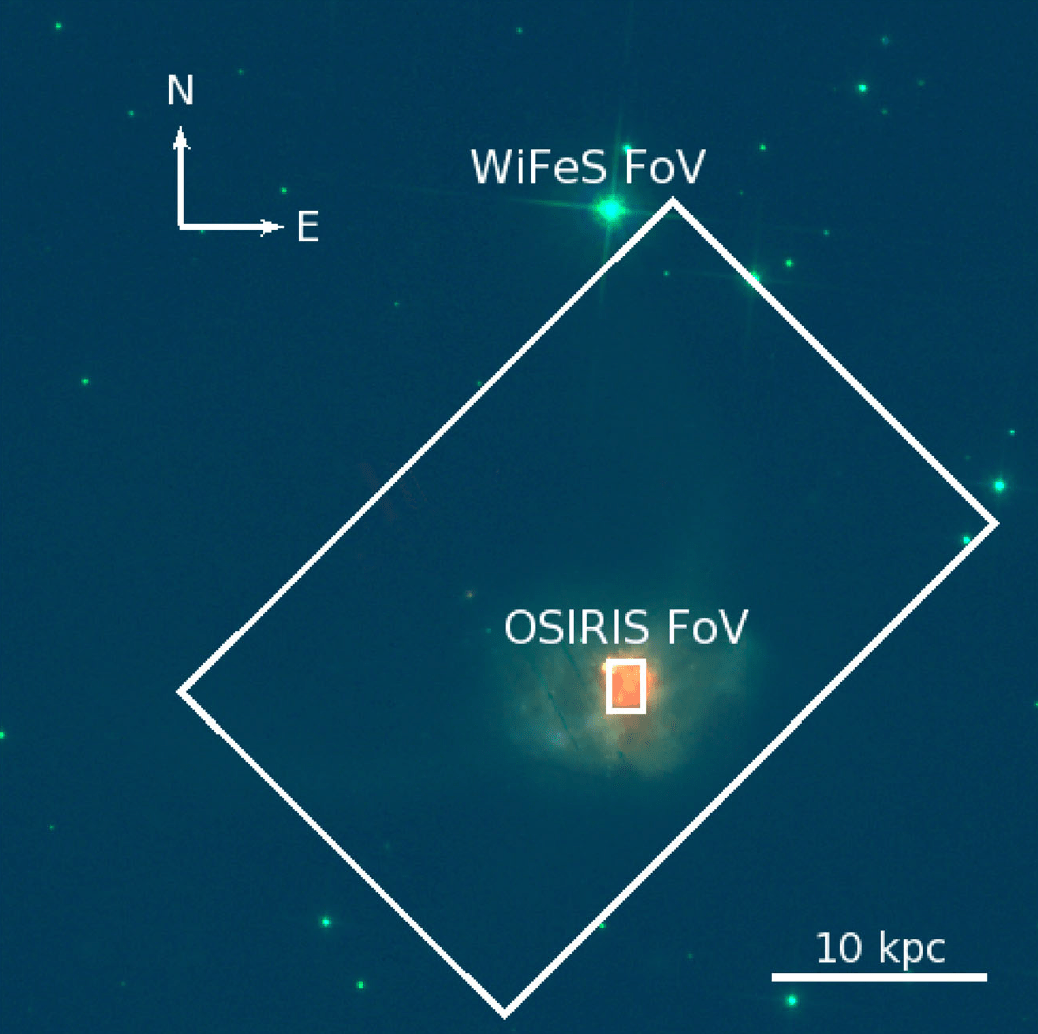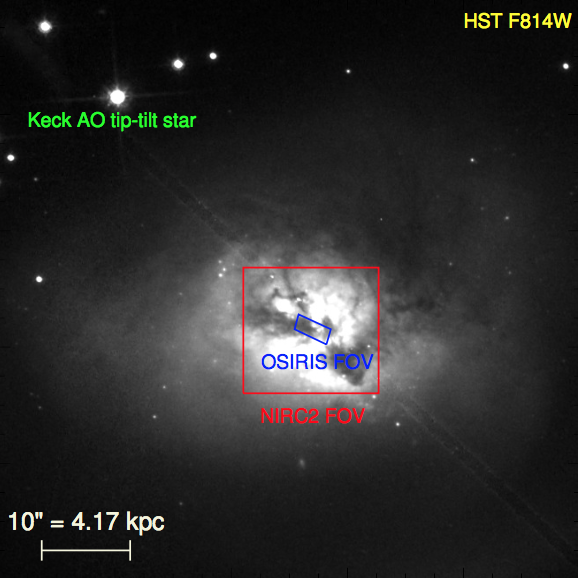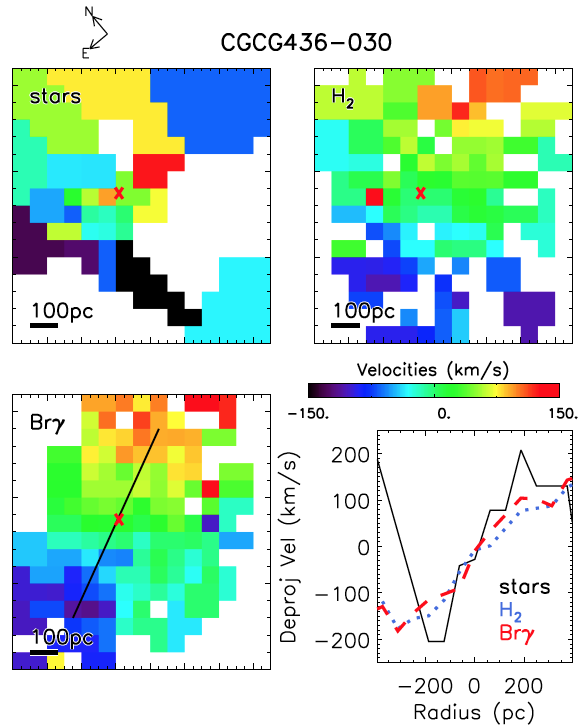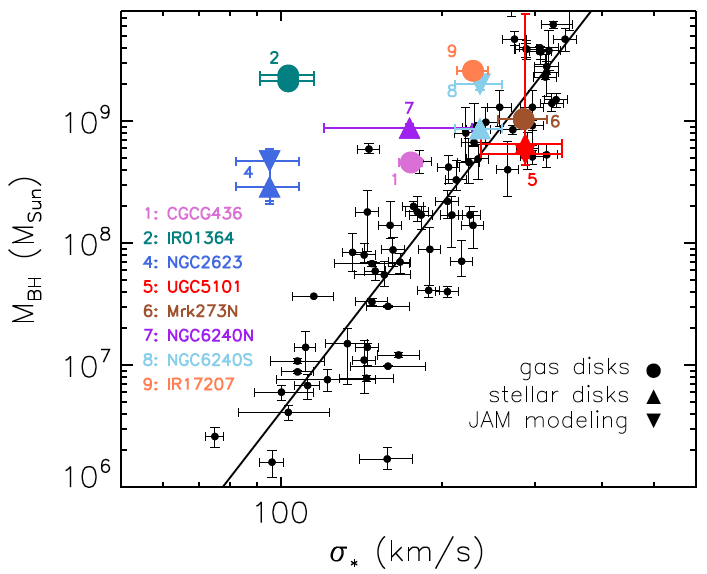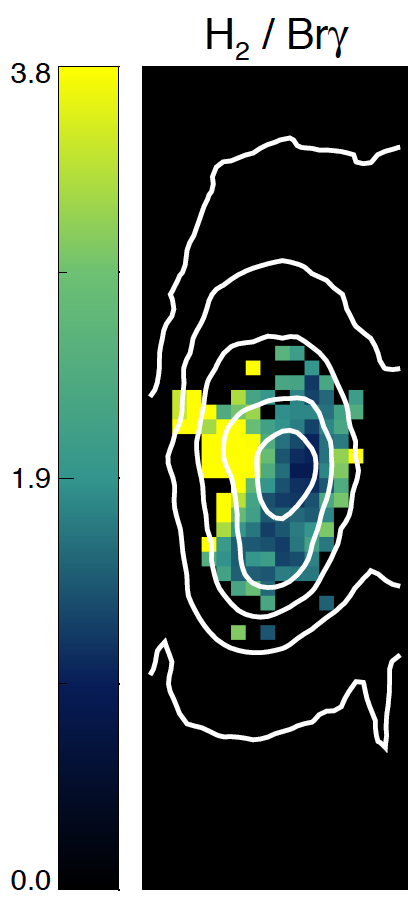A Local Census of Infrared-Luminous Galaxy Mergers from the 3D Near-Infrared Perspective
The Great Observatories All-sky LIRGs Survey (GOALS; Armus et al. 2009) consists of just over 200 of the brightest and closest luminous and ultra-luminous infrared galaxies ((U)LIRGs) in the local universe, a complete subset of the flux-limited IRAS Revised Bright Galaxy Sample (Sanders et al. 2003). The HST-ACS coverage of the survey consists of the most luminous 86 objects within GOALS, complete down to LIR ≥ 1011.4. Given that high spatial resolution images with precision astrometry are critical for planning AO observations with OSIRIS's small field-of-view, we draw from within this HST-GOALS sample those that host suitable guide stars for the Keck AO system as our primary targets.
From the HST-GOALS sample (Kim et al. 2013; Evans et al., in prep), our Keck program has observed ∼30 galaxy systems. Our target list is included here:
KOALA Target List
| Galaxy |
RA |
Dec |
z |
log LIR |
Merger Class |
| CGCG 436−030 |
01:20:02.634 |
+14:21:42.260 |
0.0315 |
11.68 |
2 |
| IRAS F01364−1042 |
01:38:52.882 |
−10:27:11.480 |
0.0490 |
11.79 |
5 |
| III Zw 035 |
01:44:30.537 |
+17:06:08.900 |
0.0278 |
11.62 |
3 |
| IRAS F03359+1523 |
03:38:47.070 |
+15:32:53.740 |
0.0365 |
11.51 |
3 |
| MCG +08−11−002 |
05:40:43.783 |
+49:41:42.150 |
0.0195 |
11.46 |
6 |
| IRAS F06076−2139N |
06:09:45.817 |
−21:40:23.660 |
0.0374 |
11.65⋆ |
3 |
| IRAS F06076−2139S |
06:09:46.025 |
−21:40:31.460 |
0.0374 |
11.65⋆ |
3 |
| NGC 2623 |
08:38:24.087 |
+25:45:16.590 |
0.0196 |
11.58 |
5 |
| UGC 05101 |
09:35:51.611 |
+61:21:11.600 |
0.0390 |
12.00 |
5 |
| UGC 08058 / Mrk 231 |
12:56:14.231 |
+56:52:25.250 |
0.0433 |
12.53 |
5 |
| ESO 507−G070 |
13:02:52.354 |
-23:55:17.730 |
0.0217 |
11.53 |
6 |
| VV 250a |
13:15:35.116 |
+62:07:28.540 |
0.0308 |
11.77 |
2 |
| VV 250b |
13:15:30.819 |
+62:07:45.320 |
0.0308 |
11.77 |
2 |
| UGC 08387 |
13:20:35.350 |
+34:08:21.750 |
0.0239 |
11.72 |
5 |
| UGC 08696 / Mrk 273 |
13:44:42.140 |
+55:53:13.700 |
0.0380 |
12.18 |
5 |
| IRAS F14348−1447 |
14:37:38.299 |
-15:00:23.950 |
0.0830 |
12.37 |
4 |
| VV 340a |
14:57:00.701 |
+24:37:02.220 |
0.0344 |
11.79 |
1 |
| VV 705N |
15:18:06.140 |
+42:44:45.100 |
0.0402 |
11.88 |
4 |
| VV 705S |
15:18:06.339 |
+42:44:38.230 |
0.0402 |
11.88 |
4 |
| IRAS F15250+3608 |
15:26:59.443 |
+35:58:37.010 |
0.0563 |
12.07 |
5 |
| NGC 6090 |
16:11:40.865 |
+52:27:27.640 |
0.0303 |
11.55 |
4 |
| NGC 6240 |
16:52:58.870 |
+02:24:04.380 |
0.0244 |
11.93⋆ |
4 |
| IRAS F17207−0014 |
17:23:22.010 |
−00:17:00.200 |
0.0432 |
12.46⋆ |
5 |
| IRAS F18090+0130E |
18:11:38.380 |
+01:31:39.820 |
0.0286 |
11.65⋆ |
2 |
| IRAS F18090+0130W |
18:11:33.367 |
+01:31:42.370 |
0.0292 |
11.65⋆ |
2 |
| NGC 6670E |
18:33:37.617 |
+59:53:23.280 |
0.0291 |
11.65⋆ |
2 |
| NGC 6670W |
18:33:33.927 |
+59:53:17.080 |
0.0291 |
11.65⋆ |
2 |
| IRAS F20351+2521 |
20:37:17.743 |
+25:31:37.750 |
0.0344 |
11.61⋆ |
0 |
| IRAS F22491−1808 |
22:51:49.220 |
−17:52:23.400 |
0.0781 |
12.19 |
5 |
| NGC 7469N |
23:03:17.985 |
+08:53:37.750 |
0.0163 |
11.58 |
2 |
| NGC 7469S |
23:03:15.616 |
+08:52:26.830 |
0.0163 |
11.58 |
2 |
| NGC 7674W |
23:27:56.726 |
+08:46:44.660 |
0.0289 |
11.51 |
1 |
| NGC 7674E |
23:27:58.770 |
+08:46:58.190 |
0.0289 |
11.51 |
1 |
Table notes: Logarithmic infrared luminosity
defined as log LIR [8−1000μm] was adopted from U et al. (2012) and ⋆Armus et al. (2009); Merger classification was adopted from Haan et al. (2011) and Kim et al. (2013).

 HST-ACS images of galaxies placed along the merger sequence; taken as part of the GOALS campaign. Credit: NASA, ESA, the Hubble Heritage Team (STScI/AURA)-ESA/Hubble Collaboration and A. Evans (University of Virginia, Charlottesville/NRAO/Stony Brook University)
HST-ACS images of galaxies placed along the merger sequence; taken as part of the GOALS campaign. Credit: NASA, ESA, the Hubble Heritage Team (STScI/AURA)-ESA/Hubble Collaboration and A. Evans (University of Virginia, Charlottesville/NRAO/Stony Brook University)
